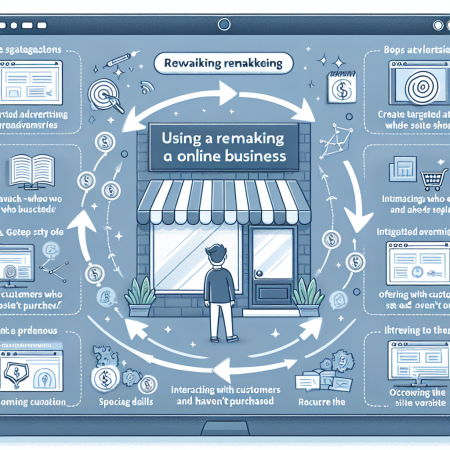How to Use Remarketing to Boost Your Online Business
Understanding Remarketing
Remarketing is a powerful online marketing strategy that allows businesses to reconnect with website visitors who did not make a purchase or take a desired action. By using cookies to track visitors on your site, you can then display targeted ads to them as they browse other websites or social media platforms. This provides an opportunity to bring back interested prospects and convert them into customers.
One key benefit of remarketing is its ability to keep your brand top-of-mind for potential customers. By repeatedly showing targeted ads to users who have already shown interest in your products or services, you increase the likelihood of them returning to complete a purchase. Remarketing can be an effective way to drive conversions and maximize your marketing ROI.
How Remarketing Works
To implement a remarketing campaign, you first need to set up a tracking code on your website that captures visitor data. This code will place a cookie in the user’s browser, allowing you to identify and target them with relevant ads later on. When a visitor leaves your site without completing a desired action, such as making a purchase, the remarketing system kicks in and starts displaying ads to them across various online platforms.
Remarketing ads can be tailored based on the specific actions users took on your website. For example, you can create different ad campaigns for visitors who abandoned their shopping carts versus those who viewed a specific product page. By segmenting your audience and delivering personalized messages, you can increase the chances of re-engaging with users and driving conversions.
Benefits of Remarketing
One of the main advantages of remarketing is its cost-effectiveness. Since you are targeting users who are already familiar with your brand or products, the likelihood of conversion is higher compared to targeting cold audiences. This can lead to a higher return on investment and improved marketing performance.
Remarketing also allows you to create personalized and relevant ad experiences for different segments of your audience. By tailoring your messaging to specific user behaviors or interests, you can deliver more compelling ads that resonate with potential customers. This level of customization can help improve engagement and drive more conversions over time.
Best Practices for Remarketing
When setting up a remarketing campaign, it’s important to define clear goals and objectives for your ads. Whether you want to increase website traffic, boost sales, or generate leads, having a specific purpose in mind will help you tailor your campaigns for success. Additionally, make sure to set realistic expectations for your remarketing efforts and continuously monitor and optimize your campaigns for better results.
Another best practice is to segment your audience based on their behavior and engagement with your site. By creating different remarketing lists for users who visited specific pages or took certain actions, you can deliver more targeted and relevant ads that are likely to resonate with each segment. This level of personalization can lead to higher conversion rates and improved ROI.
Common Mistakes to Avoid
One common mistake in remarketing is bombarding users with too many ads, which can lead to ad fatigue and a negative user experience. It’s important to find the right balance between staying top-of-mind and overwhelming users with repetitive ads. Additionally, make sure to test different ad creatives, messages, and offers to see what resonates best with your audience and drives the most conversions.
Another mistake to avoid is neglecting to optimize your landing pages for remarketing traffic. Once you successfully bring users back to your site through ads, you need to ensure that your landing pages are designed to convert these visitors into customers. Make sure your landing pages are relevant to the ad they clicked on and provide a seamless user experience to maximize conversions.

